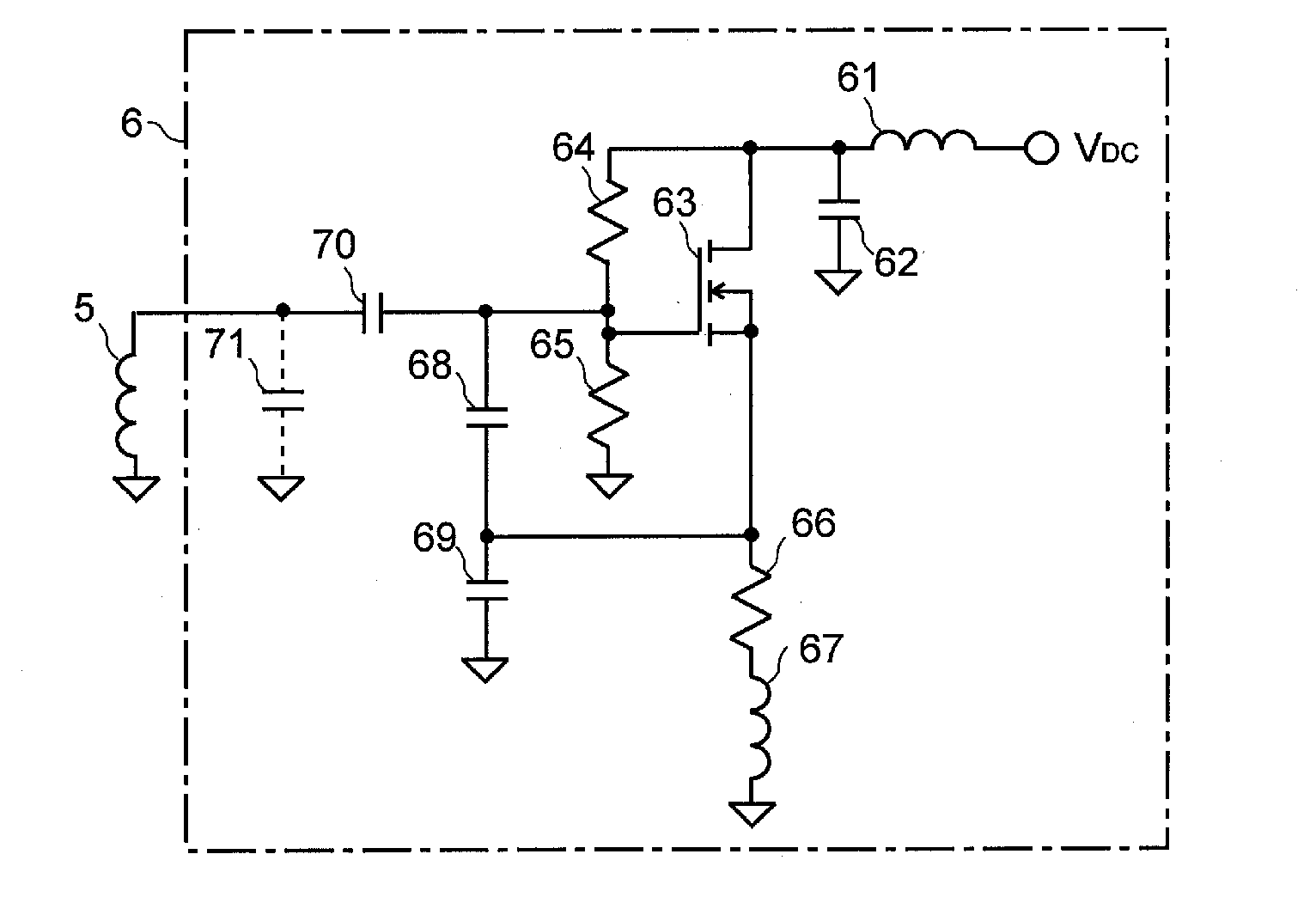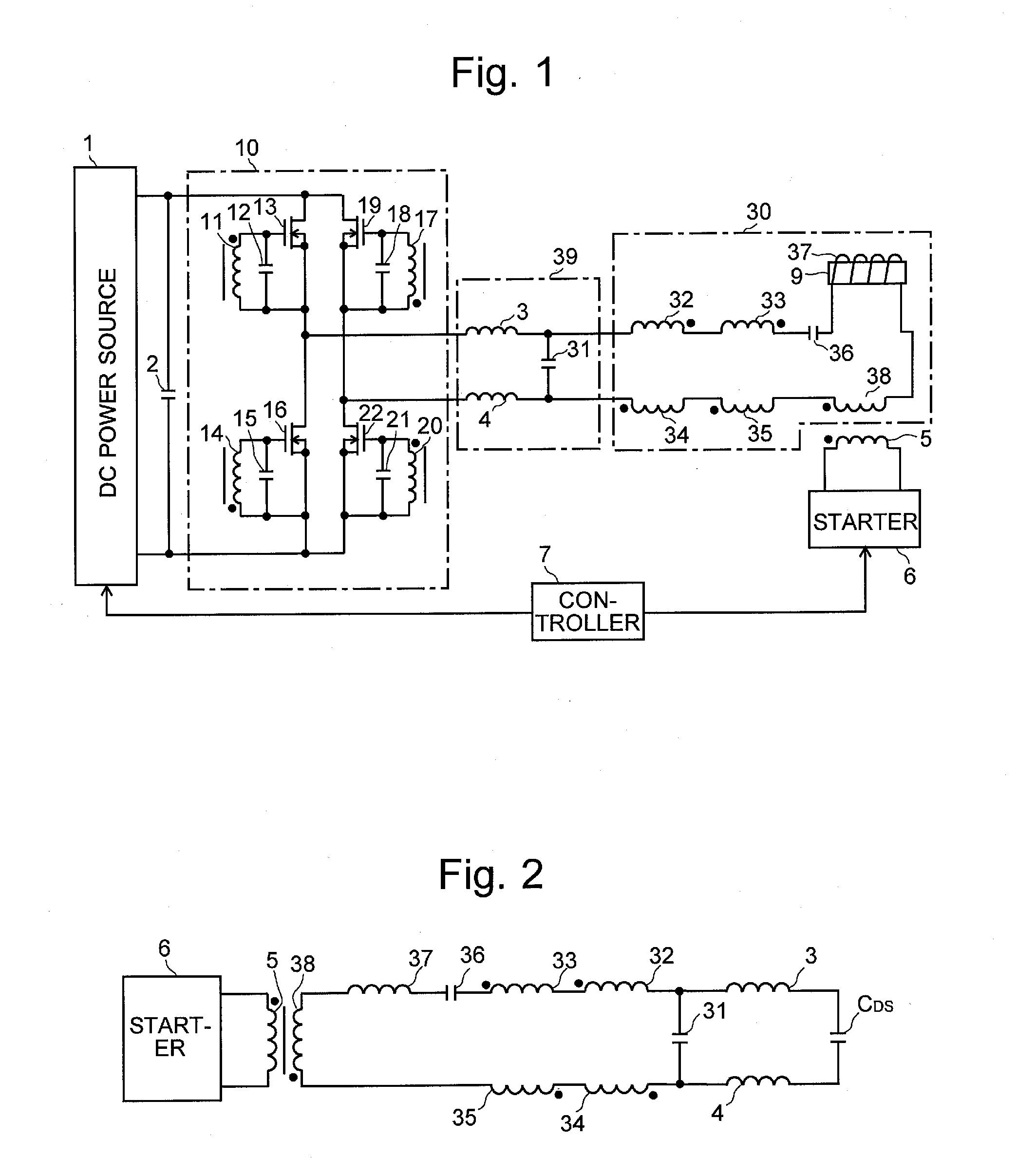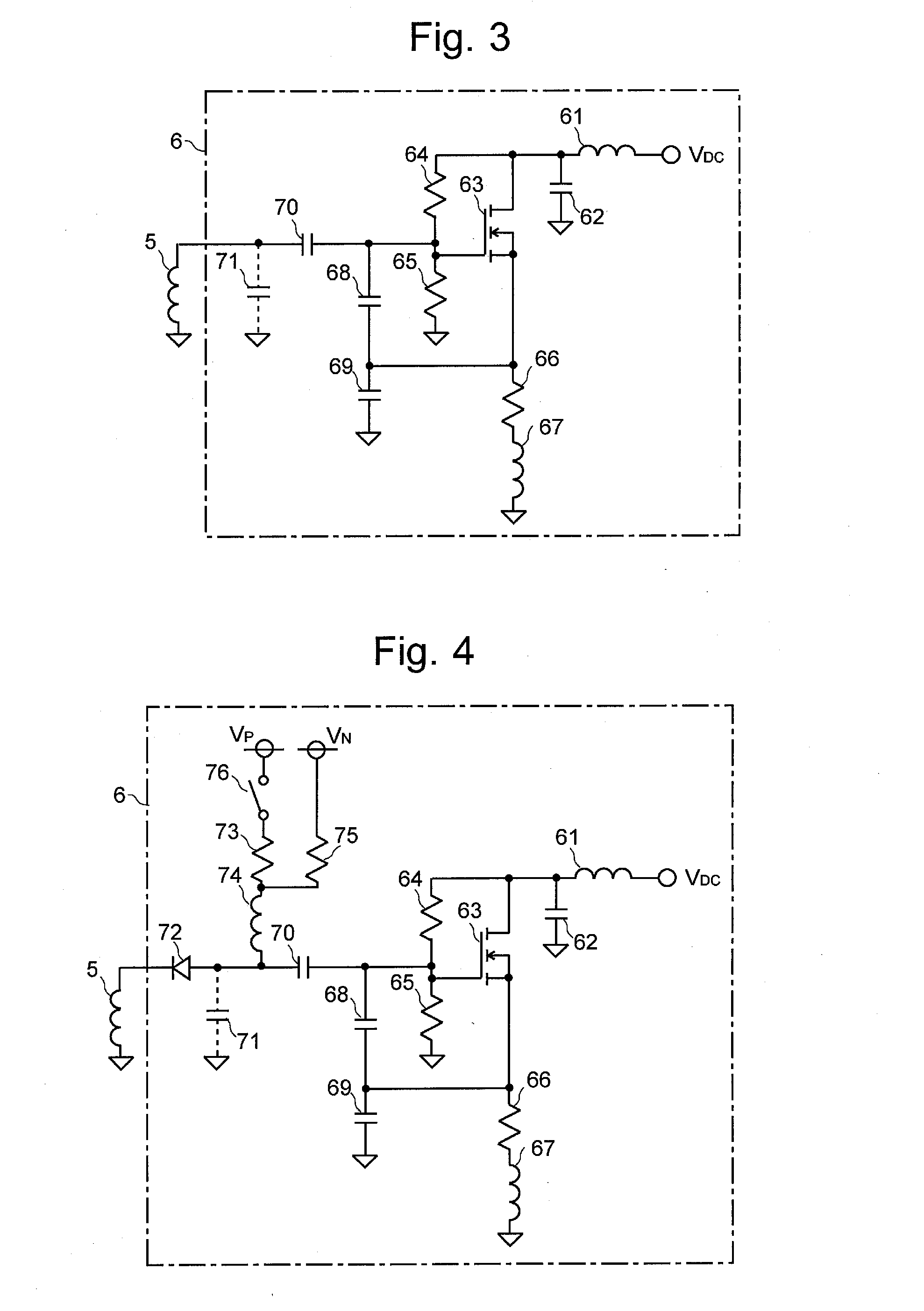Radio-frequency oscillation circuit
a radio-frequency oscillation and circuit technology, applied in the field of radio-frequency oscillation circuits, can solve the problems of complex control, deviating from the optimal state of the impedance matching, and affecting the operation of the radio-frequency oscillation, so as to achieve no deterioration of frequency characteristics, no increase in the output capacitance of the switching element, and low cost
- Summary
- Abstract
- Description
- Claims
- Application Information
AI Technical Summary
Benefits of technology
Problems solved by technology
Method used
Image
Examples
Embodiment Construction
[0028]As one embodiment of the present invention, a radio-frequency oscillation circuit used for plasma generation in an ICP emission spectrometer is hereinafter described with reference to the attached drawings.
[0029]FIG. 1 is a configuration diagram of the radio-frequency oscillation circuit of the present embodiment, FIG. 2 is a diagram showing an equivalent circuit of the radio-frequency oscillation circuit of the present embodiment, and FIG. 3 is a diagram showing one example of the circuit configuration of the starter in FIG. 1.
[0030]An induction coil 37 wound around a plasma torch 9 of the ICP emission spectrometer to generate plasma in this plasma torch 9 is the target to which a radio-frequency current needs to be supplied in the present radio-frequency oscillation circuit. A capacitor 36 and four primary windings 32, 33, 34 and 35 of a feedback transformer are connected in series with this induction coil 37. Also connected in series with these circuit elements is a seconda...
PUM
 Login to View More
Login to View More Abstract
Description
Claims
Application Information
 Login to View More
Login to View More - R&D
- Intellectual Property
- Life Sciences
- Materials
- Tech Scout
- Unparalleled Data Quality
- Higher Quality Content
- 60% Fewer Hallucinations
Browse by: Latest US Patents, China's latest patents, Technical Efficacy Thesaurus, Application Domain, Technology Topic, Popular Technical Reports.
© 2025 PatSnap. All rights reserved.Legal|Privacy policy|Modern Slavery Act Transparency Statement|Sitemap|About US| Contact US: help@patsnap.com



